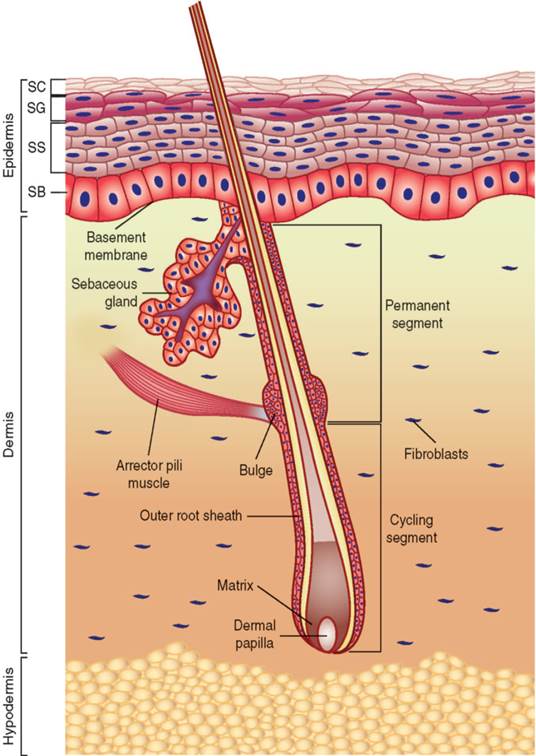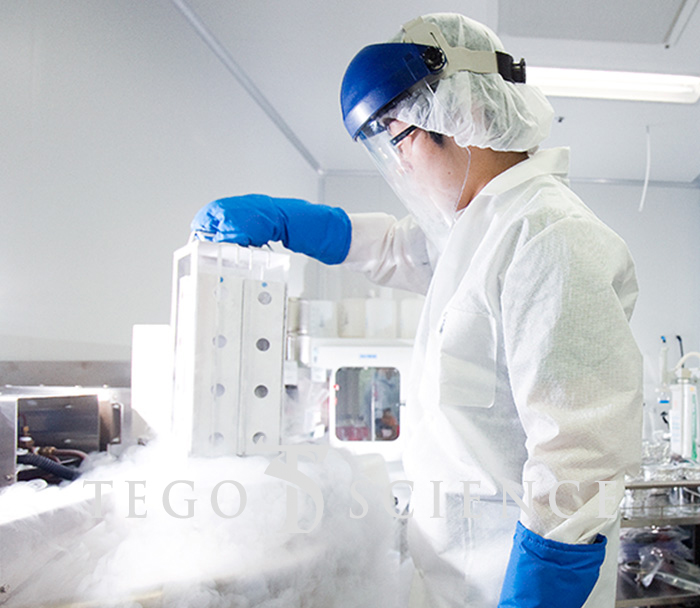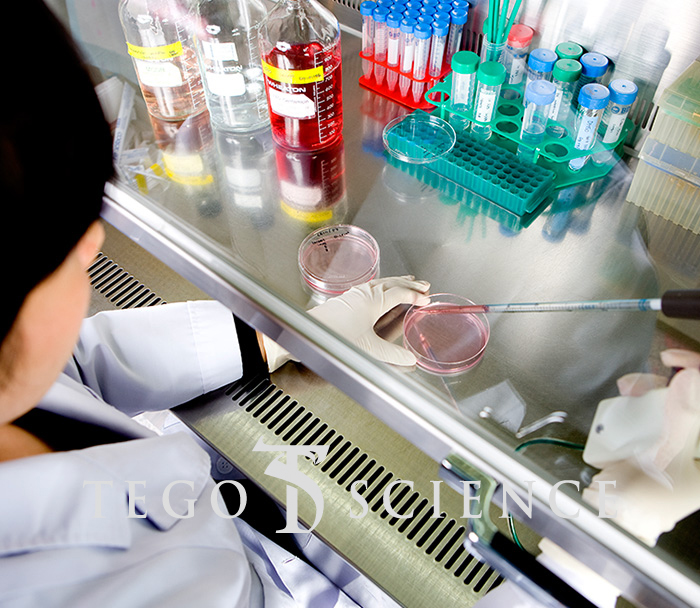Introduce the core technologies and research achievements of Cutigen Research Institute
Core Technology

* Source: "Skin tissue engineering", stembook.org, 2009
Tego Science’s main technology is based on the culture of human epidermis, the top layer of the human skin. The skin consists of three main layers. The top layer epidermis is translucent and does not contain any blood vessels but gets its oxygen and nutrients from the deeper layers of the skin. A very thin membrane, the basement membrane, attaches the epidermis to the second layer called the dermis. A series of pegs project up from the dermis and similar structures project down from the epidermis. These projections increase the area of contact between the layers of skin and help prevent the epidermis from being sheared off. Below the dermis is a layer of fat, called subcutaneous fat and it lies on muscles and bones attached by connective tissues. A biopsy of a human skin is treated with enzymes to cultivate keratinocytes, cell type which composes 90% of the epidermis. Growth factors and fibroblasts are added to promote the proliferation of keratinocytes. During the initial phase of culture, the keratinocytes grow into small colonies and eventually shove out the dermal cells. After 10 to 14 days of cultivation the keratinocytes form a normal sheet of epidermis.
Keratinocyte Culture
Improvement in the efficiency of human skin keratinocytes subculture
Human keratinocytes isolated from a skin biopsy has limitations in culture potential due to finite life span, and it requires high costs and fastidious quality management to keep introducing new cell sources. Therefore the challenge is to achieve efficient subculture to generate a semi-permanent keratinocyte supply. The Company has developed an optimal condition for subculture and lengthened the passaging from the common 6-7 to 14.
Mass production of 3T3 fibroblast feeder layers
The separated keratinocytes are cultured on the bed of gamma-irradiated 3T3 fibroblasts. Since the 3T3 cells are a core ingredient for cell culture, its mass production technology plays a key role in reducing the total cost. With a new suspension culture system, the Company achieved yields 10 times greater than obtained through the conventional surface culture method.
Long-term preservation of cultured epidermis
The conventional tissue storage method requires a complicated freeze-thaw procedure because cultured skin is kept at under -150°C in a toxic solution. Once thawed and washed the artificial skin cells have short life span. The Company keeps Kaloderm® at -70℃ in a harmless solution. The Company is currently developing a technology that will enable safely storing Kaloderm® at -20℃.


Technology for 3-dimentional skin model
Tego Science has developed a 3-D skin model that possesses the important properties of the
human skin. This can replace animal testing in developing new drugs, cosmetics and vaccines or
be used as a system for studying viruses such as HPV. It also allows researchers to grow
in vitro any epidermal cells of choice to obtain customized models.
The human biopsy is given enzyme-treatment and the isolated keratinocytes are cultured
on fibroblast-imbedded collagen. After a certain period, the model is air-lifted
for all necessary skin layers to be developed.